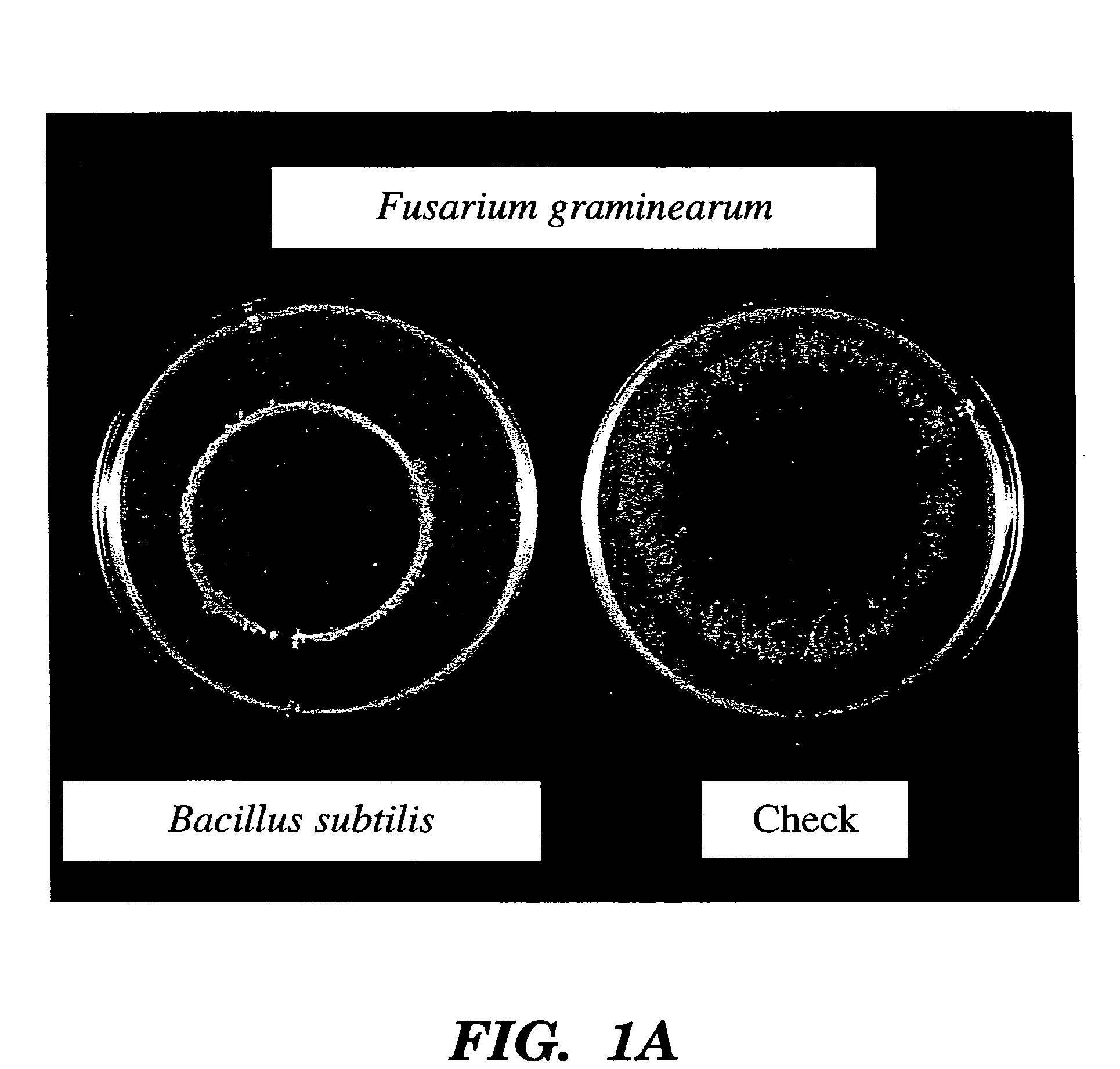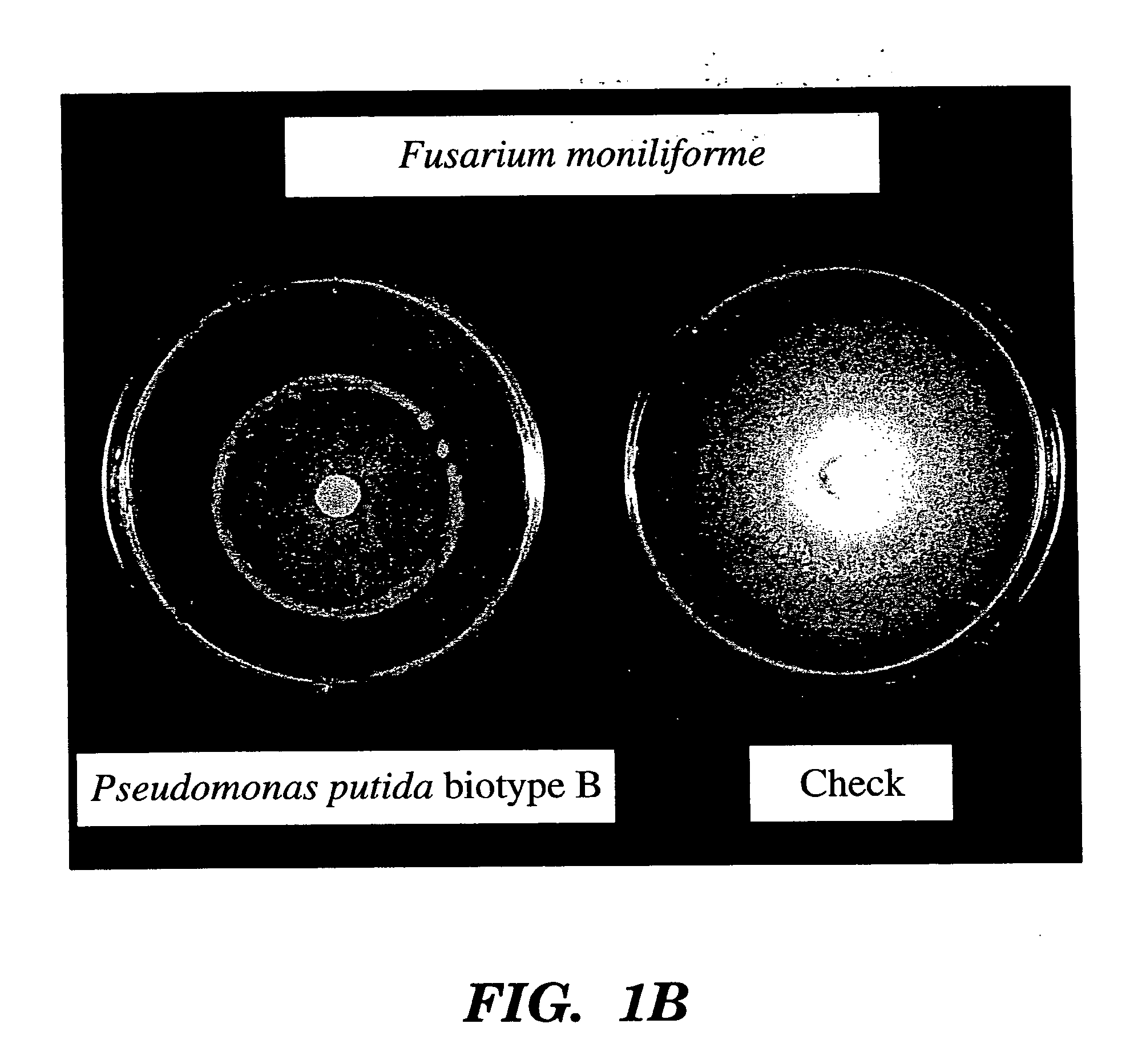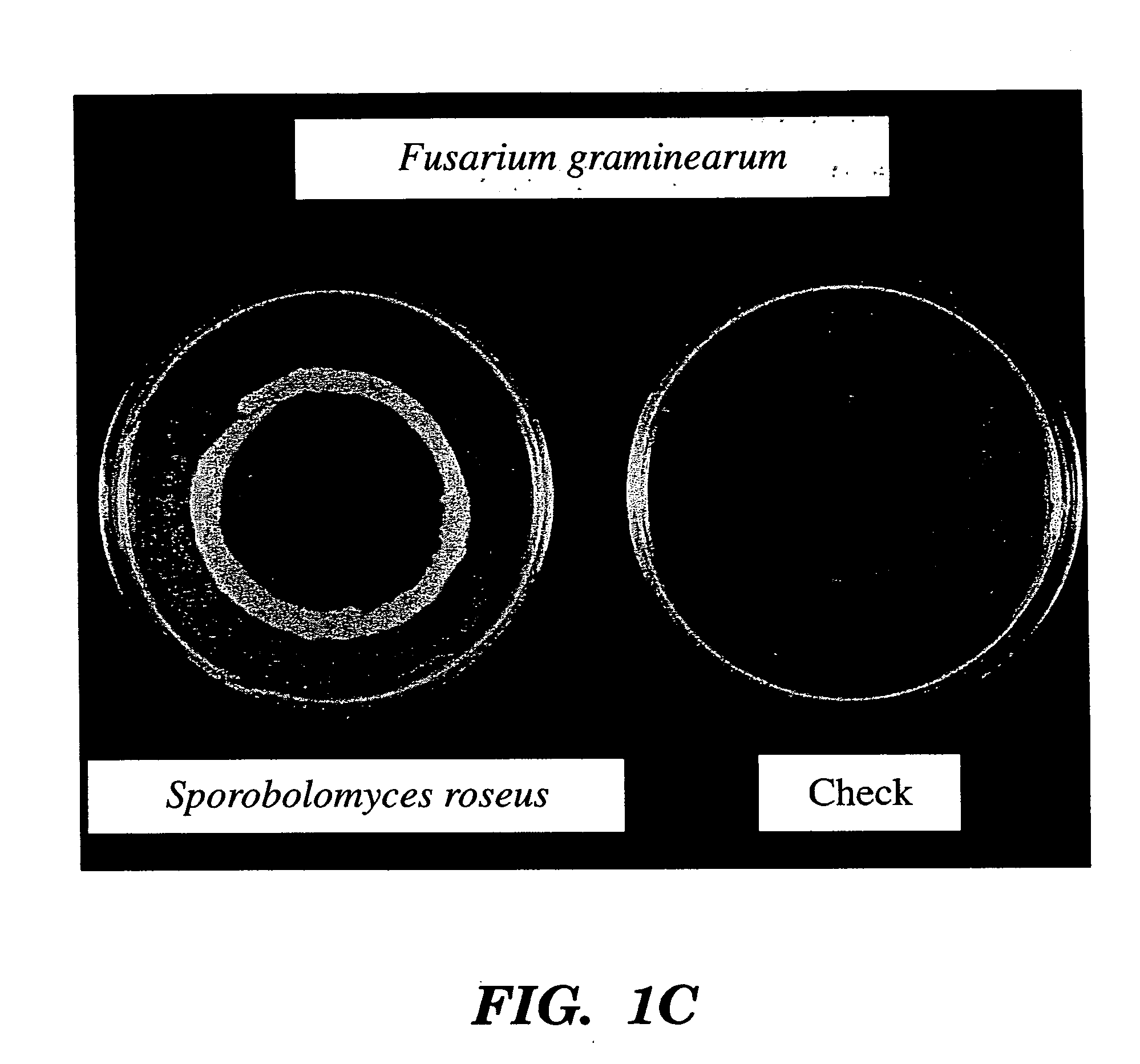Biocontrol for plants with bacillus subtilis, pseudomonas putida, and sporobolomyces roseus
a technology of sporobolomyces roseus and plants, applied in the field of biocontrol of plants with bacillus subtilis, pseudomonas putida, and sporobolomyces roseus, can solve the problems of difficult measurement accuracy, lack of suitable techniques for assaying soil samples, and large population size of many soil microorganisms, etc., to achieve the effect of enhancing the growth of treated plants
- Summary
- Abstract
- Description
- Claims
- Application Information
AI Technical Summary
Benefits of technology
Problems solved by technology
Method used
Image
Examples
example 1
Characterization of the Bacillus Subtilis Isolate TrigoCor 1448 (ATCC Accession No. 202152)
[0038] The bacterial isolate deposited as ATCC Accession No. 202152 (also referred to as “TrigoCor 1448”), was originally identified as Paenibacillus macerans (based on GC-FAME analyses and a database search provided by Microbe Inotech Laboratories, St. Louis, Mo.). However, in February 2001, TrigoCor 1448 was reclassified as Bacillus subtilis, based on a Basic Local Alignment Search Tool (“BLAST”) search of sequences of the 16S ribosomal RNA (rRNA) gene. A 500 base pair segment of the 16S rRNA of TrigoCor 1448 was sequenced by Microbe Inotech Laboratories (St. Louis, Mo.) and has been identified as Bacillus subtilis with 99 percent confidence, based on the sequence similarity with entries in the NCBI's GeneBank nucleotide database. Based on this analysis, 529 out of 532 base pairs of the 16S rRNA gene of TrigoCor 1448 matched those of Bacillus subtilis strain TB11 (used for production of a b...
example 2
Ribotyping Analysis of Bacillus Subtilis Isolate TrigoCor 1448
[0039] TrigoCor 1448 was further characterized based on its ribotype. Ribotyping is a diagnostic method used to identify and classify bacteria based on differences in their rRNA genes. This method generates a precise and highly reproducible rRNA “fingerprint” that can be used to classify bacteria and distinguish them beyond the species level. In general, this method involves extracting DNA from a sample bacterial colony of interest and then restricting the DNA into discrete-sized fragments. Thereafter, the DNA is transferred to a membrane and probed with a region of the rRNA operon to reveal the pattern of rRNA genes for the sample. The pattern, also referred to as a ribotype or riboprint pattern, is then recorded, digitized, and stored in a database. The sample's riboprint pattern may then be compared against those of other bacteria. Variations that exist among bacteria in both the position and intensity of the resultin...
example 3
In-Vitro Assays for Antibiosis of F. Graminearum by Bioprotectants
[0044] In paired treatments, the radial growth (mm) of F. graminearum in the presence or absence of Bacillus subtilis isolated TrigoCor 1448 (ATCC Accession No. 202152), Pseudomonas putida (ATCC Accession No. 202153), or Sporobolomyces roseus (ATCC Accession No. 74456) was measured as a means of ascertaining the antibiosis of the pathogen by candidate bioprotectants. Each bacterial or yeast isolate was transferred onto ¼ strength potato dextrose agar (i.e. PDA) in a circular pattern by means of a small sterile glass funnel. After 2 days of incubation at ambient temperature, an agar disk containing mycelia of the pathogen was transferred into the center of the ring-shaped colony of the bioprotectant or, in the control treatment, onto an uninoculated media plate. The radial growth of the pathogen was measured after 5 days of incubation. There was a minimum of four replicates per treatment.
PUM
| Property | Measurement | Unit |
|---|---|---|
| systemic resistance | aaaaa | aaaaa |
| damping | aaaaa | aaaaa |
| strengths | aaaaa | aaaaa |
Abstract
Description
Claims
Application Information
 Login to View More
Login to View More - R&D
- Intellectual Property
- Life Sciences
- Materials
- Tech Scout
- Unparalleled Data Quality
- Higher Quality Content
- 60% Fewer Hallucinations
Browse by: Latest US Patents, China's latest patents, Technical Efficacy Thesaurus, Application Domain, Technology Topic, Popular Technical Reports.
© 2025 PatSnap. All rights reserved.Legal|Privacy policy|Modern Slavery Act Transparency Statement|Sitemap|About US| Contact US: help@patsnap.com



